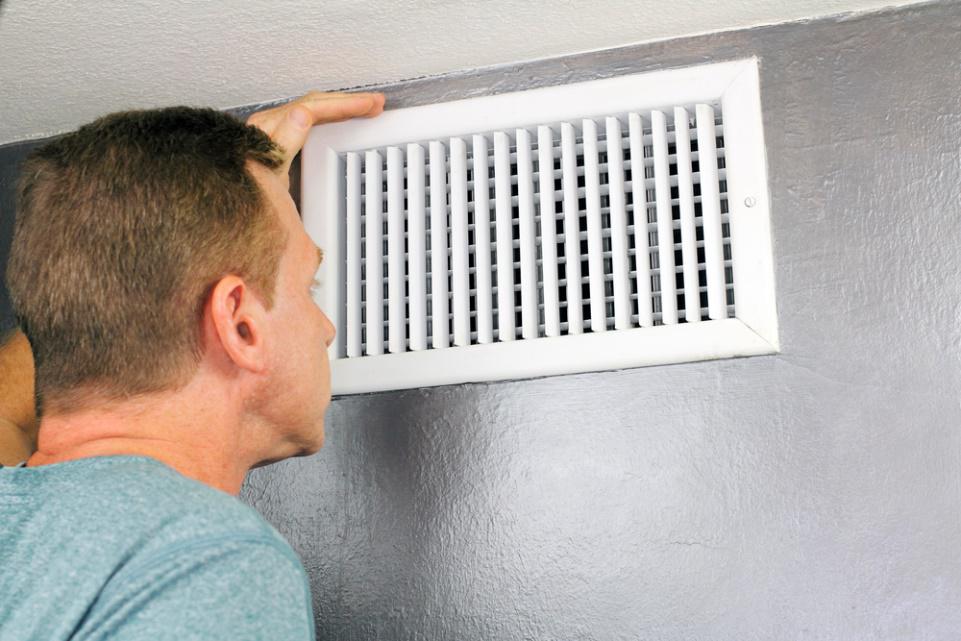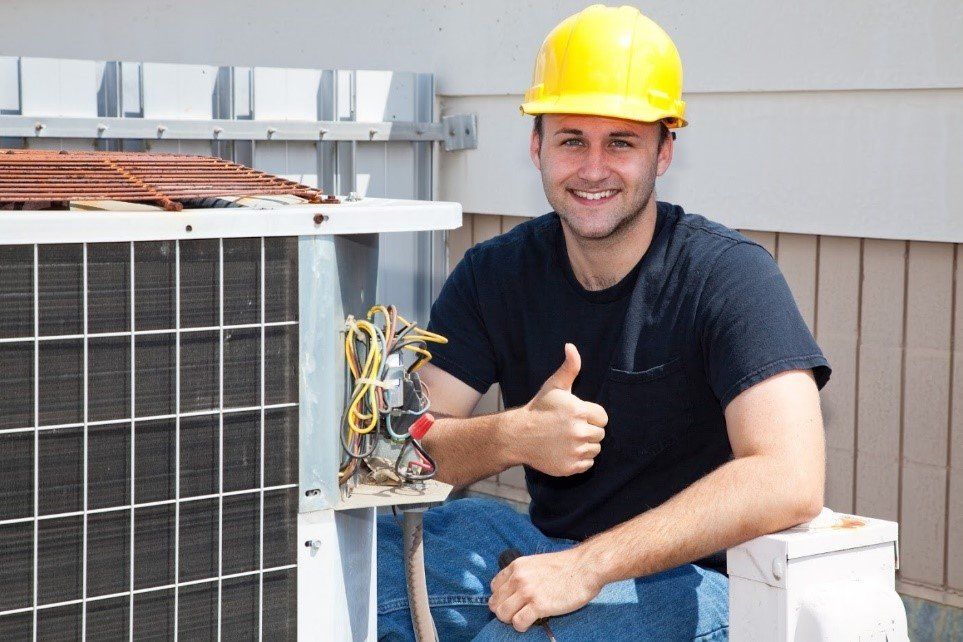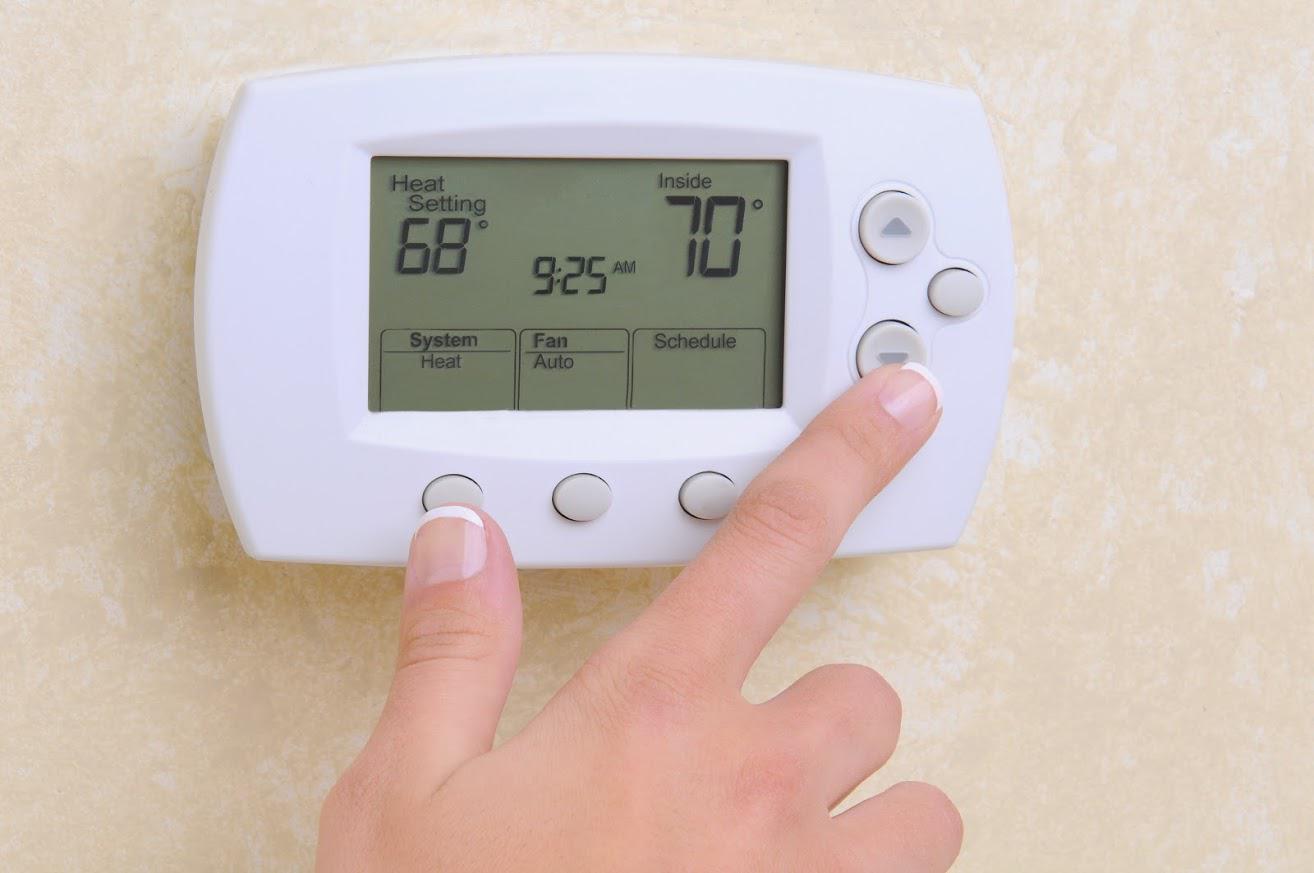Air Conditioning Options for Older Homes
- By Admin
- •
- 20 Jun, 2018
- •
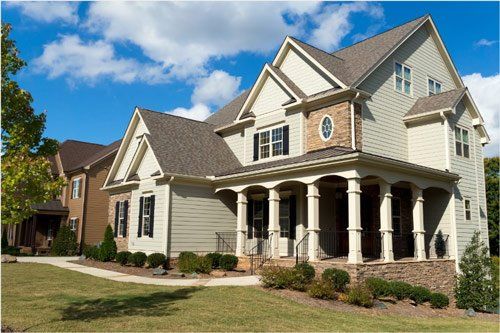
The Wasatch front has its fair share of older homes. One of the most common issues that modern homeowners face with old houses is retrofitting the home for modern cooling systems. A century ago, homes were not built with energy efficiency in mind. Cooling and even some central heating systems did not yet exist.
You can keep the beautiful charm of your home while successfully installing air conditioning. Learn more about different options you can consider for your house if you're hoping to upgrade from a window unit and interior fans.
Evaporative Cooling
A popular option in Utah for cooling is the evaporative cooler, or swamp cooler. These units sit on the roof or on the side wall of a house. They work with a series of pads that are constantly soaked with water. Air blows through the pads, and the water in the pads cools the air. A fan blows the cooler, moist air into the house.
Swamp coolers work well in Utah because of the dry climate. Swamp coolers can be powerful, cooling much of a living space. They offer a number of advantages:
- Easy installation. You don't need to run ducts for swamp coolers, which is helpful because many old homes don't have any existing ductwork, and installing it can be challenging.
- Low cost to run. You simply need power to run the water pump and the fan, which takes less energy than air conditioning condensers from central systems.
- Simple to maintain. With simple components comes simple repairs. You need to change the pads occasionally and make sure that the water pump and fan are free of debris.
Another reason why a swamp cooler can be a good choice for an older house is because older homes are not as tightly sealed for climate control. Swamp coolers need cracked windows to pull cool air through the house. An older house that naturally breathes will not become as humid from the moist air.
This cooling method does have some disadvantages. A swamp cooler is not connected to a thermostat. Your home will be cooler than the outdoors, but you won't be able to control your interior temperature to a specific degree. On hot days, your inside temperature will go up, and on colder days, the temperatures will go down.
Also, swamp coolers work well with open concept homes, and swamp coolers are not as well suited for larger houses because the air comes from a single unit and it not ducted to each room. If your old house has many walled off areas, the cooler might not be able to distribute air through the house.
Partial Central Air
You might consider installing a split central air conditioner with an exterior condenser and an interior duct system, but you might not need to run the air through the entire house.
For example, if you have a two-story home, you could have room to run ample ducting along the ceilings in the basement or crawl space, blowing air out into main floor rooms through floor registers. Reaching the second story is more challenging in some older homes. You might not want to run ducts along the main floor ceiling and ruin the aesthetics of the high ceilings and crown molding.
To fix this problem, you can keep the cool air on the main floor. To help bring warm air down from the second story, you can install a ceiling fan at the top of the stairs, or you can install a single warm air return vent that brings warm air down from the top floor, encouraging air circulation back upstairs. The vent can run through a closet or unused chimney space.
Full Central Air
Finally, the most comfortable option is full central air. In old houses, getting full central air can take some skillful manipulation of the house components to hide ducting. However, this isn’t as impossible as you might think.
First, look at your existing heating system. Do you have a gas or electric furnace that uses ducting? Sometimes, these systems can be adapted to also carry air-conditioning through the home. If you have a boiler, floorboard heating, or a wood stove and no existing ducting, installing new ducts become more challenging. However, you can find places to put AC ducts, including:
- Closets. Some homes may have small closets in most rooms, and tucking a duct in one of these closets is fairly simple.
- Old chimneys. Older homes may have had a fireplace in many different rooms. These fireplaces may not be in use anymore, but the space where the chimney exited the house is still there. Ducts can sometimes run up these spaces to access top level rooms.
- Cabinets. Built-in cabinetry is a charming perk for an old home. Dedicate some of one or two built-in cabinets to ducting.
You can also try out new HVAC delivery systems that use small pipes for air delivery, using high-velocity air flow. These systems can be louder and costlier, but they are simpler to fit into the existing design of an older house.
For more information about getting better air conditioning in your older home, contact us at Hartman Heating, Air and Fireplaces.

If you are struggling with hot and cold rooms in your home, read on to learn more about common causes and possible fixes for these variations.
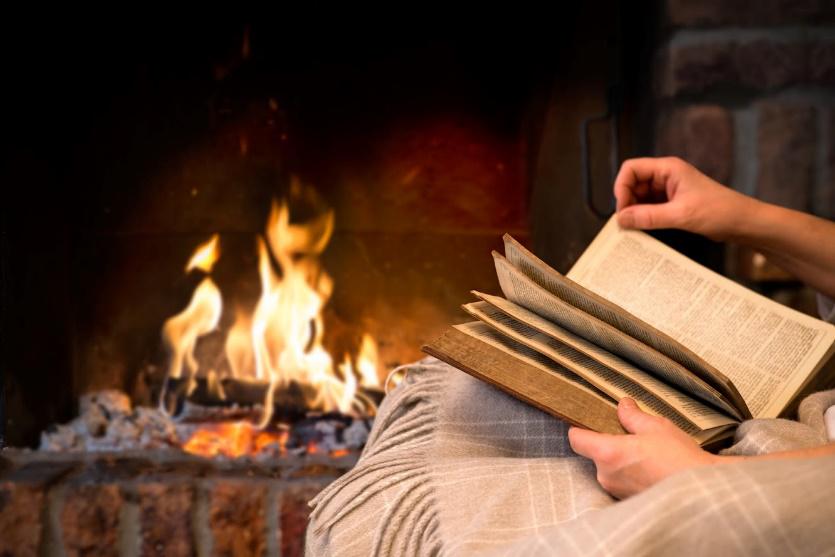
Read on to learn more about creosote, how it affects your fireplace, and the steps you can take to keep your fireplace in good condition.
What Is Creosote?
Creosote is a combination of tars and various other chemicals produced as a byproduct of burning wood or fossil fuels. Small amounts of creosote mingle with the smoke that rises to the top of the flue. Along the way, the creosote combines with moisture and adheres to the flue liner or open brickwork of the chimney, creating a thin layer of tar that solidifies as it cools.
Creosote has had plenty of interesting uses throughout history, including as the active component of various medicines. These days, creosote is used in commercial applications to treat and preserve wood for increased longevity and durability. Creosote is responsible for giving smoked meats their distinctively smoky flavor, plus it's also the special ingredient behind artificial liquid smoke flavoring.
Why Is It Dangerous?
Creosote buildup never goes away on its own. Once a layer of creosote forms, it's there for good until it's physically removed. Without proper cleaning, multiple layers of creosote will steadily build up every time you use your fireplace. This buildup causes the flue to narrow, reducing the amount of ventilation available to your fireplace.
The resulting lack of fresh air prevents your fireplace from burning its fuel efficiently, resulting in a smaller, dirtier flame that causes even more creosote buildup. The cycle continues until your flue becomes completely blocked with creosote, rendering your flue liner unusable.
Creosote is also highly flammable, especially when it accumulates in large amounts. Excess amounts of creosote can ignite when exposed to enough heat from your fireplace. Creosote-fueled fires can spread quickly and with little to no warning, making these fires incredibly dangerous. Failure to clean excess creosote buildup is a common factor behind most home heating fires, according to research from the National Fire Protection Agency.
How Does It Form?
There are several stages to creosote buildup. Each successive stage can prove more difficult to deal with than the last, which highlights the importance of tackling creosote buildup at its earliest stages. How soon creosote buildup occurs usually depends on several factors, including the efficiency and overall condition of your fireplace. If you're using a wood fireplace, the quality of the wood being used as fuel can also affect creosote buildup.
First Stage
Creosote buildup starts out as a light coating on the flue. Depending on how efficiently your fireplace burns its fuel, the creosote buildup will mostly consist of soot with small amounts of tar mixed together. As a result, the initial stage of creosote buildup appears thin and flaky.
The first stage of creosote buildup is always the easiest to deal with. Fireplace technicians can remove creosote buildup using special-purpose brushes, preventing additional, harder-to-remove layers from forming.
Second Stage
As the creosote buildup continues, the soot is replaced with more tar, giving the creosote a thicker, harder, and sometimes shinier appearance. The overall texture of the buildup remains dry and crumbly, however.
Brushing alone won't remove second-stage creosote buildup. Rotary loops and chemical solvents are the usual go-to tools for fireplace technicians when battling creosote buildup at this stage.
Third Stage
Left to its own devices, the creosote buildup eventually turns into a highly concentrated mass that appears oily and feels sticky when fresh. Repeated exposure to heat usually gives this mass a hardened, shiny appearance. At this stage, a simple cleaning may be extraordinarily difficult, if not impossible. Some technicians even encourage a complete replacement of the flue liner as a more cost-effective alternative to cleaning.
How Can It Be Prevented?
Since it's a naturally occurring byproduct of the combustion process, there isn't much you can do to completely stop creosote buildup in its tracks. However, taking a proactive stance on fireplace maintenance will help prevent excessive creosote buildup.
Fireplace technicians can spot and take preventive action against the beginnings of excessive creosote buildup during regularly scheduled fireplace checkups. These checkups also ensure that the flue's inner mechanisms are working properly, significantly reducing the rate of creosote buildup.
Most experts recommend having your fireplace inspected on an annual basis. Flue cleanings should be done when there's a 1/8-inch deposit of creosote in the flue.
Prevention is always the key when it comes to creosote buildup. The sooner you can tackle the buildup, the easier it'll be to deal with. To learn more about the effects of creosote buildup or to schedule a professional inspection, contact us at Hartman Heating , Air and Fireplaces today.
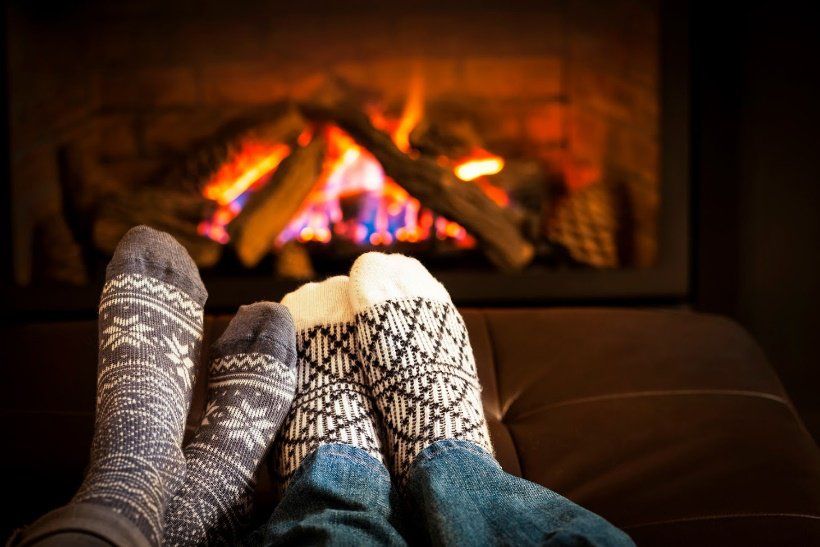
From supplementing your HVAC system in the winter to adding an appealing focal point in any room, you have several reasons to install gas or wood fireplace in your home. Have you decided that a fireplace is a great investment but are not sure if a gas or wood model is the best option for your home, family, and budget?
Do not agonize over this decision. Instead, here are a few tips and factors to help you determine if you should choose a gas fireplace or a wood fireplace for your home.
Cost of Installation
The cost to install either a gas or wood fireplace is dependent upon several factors. You have two common types of gas fireplaces in homes: gas inserts and built-in models. You install a gas insert inside an existing firebox, while you install a built-in in the wall. With the built-in fireplace, you do not need to have a firebox already in your home.
A freestanding wood stove typically costs less to install a traditional built-in wood fireplace. This is because if you opt for a built-in wood fireplace, you pay for the cost of labor and components, including the masonry.
You have other factors that impact the cost of installing either a gas or wood fireplace. If you lean toward gas, you will need to install a new propane or natural gas line if one does not already exist. Additionally, you will need to decide if you want to install a ventilation system.
For wood fireplaces, you will need to factor in the cost of replacing an existing fireplace, including the surround and firebox, and the price of installing a new chimney or repairing the existing chimney.
Cost of Fuel
The typical fuel source for a gas fireplace is either natural gas or propane. The price of either will vary throughout the year depending upon several factors, including supply, the time of year, petroleum prices, and state of the economy.
Because prices and availability fluctuate, contacting a professional to help you determine which option is best for you is a great way to ensure you choose the right product.
The costs to install either a built-in or gas insert model are about the same.
The cost of fuel for a wood fireplace is typically much less, especially if you have a readily available supply of trees on your property. The cost of wood is far less than natural gas or propane, but this can be more time-consuming to gather, cut, stack, and store the wood. Keep this in mind, especially if you do not have a place to store wood on your property.
Cost of Maintenance
The cost to maintain a wood fireplace is typically higher. If you choose a wood-burning stove, you will need to clean it periodically and schedule an appointment to have a professional inspect the unit at least two to three times per year. If the wood stove does not properly combust the fuel, the stove will not run efficiently. Maintaining a built-in wood fireplace will also cost more on average.
In addition to inspecting and cleaning the firebox, you will also need to have a professional inspect the chimney at least once a year . Luckily, you have professionals who can handle these jobs and will ensure that your built-in wood fireplace is also in amazing shape.
A gas fireplace is typically very easy to maintain and care for. If the fireplace has vents, hiring a professional to inspect and clean it at least once a year will prevent clogs.
The Look of Gas or Wood
The aesthetic appeal and the homeowner's taste is a huge factor when considering whether to pick gas or wood. If you have a more modern home, a sleek glass fireplace is a great option. You have several varieties of built-in and insert fireplaces, including models that feature glass logs, stones, or coal. You can even purchase a gas fireplace with a remote control.
If you have a more traditional home or simply prefer the classic elegance of a brick or stone facade and mantel, consider a wood fireplace. Many homeowners also prefer the smell and feel of a traditional built-in wood fireplace as well.
Resale Value
A recent survey of homeowners found that as many as 40 percent would pay more for a home that features a fireplace. Whether you choose gas or wood, installing a beautiful fireplace in your home is always a smart investment. If you want to sell your home in the future, ask a local real estate agent about which type of fireplace that homeowners in your area prefer.
From the potential resale value they add to the cost of installation and maintenance, several factors exist that you should consider when deciding to choose a gas or wood fireplace for your home. If you have any further questions, contact the professionals at Hartman Heating, Air and Fireplaces .


